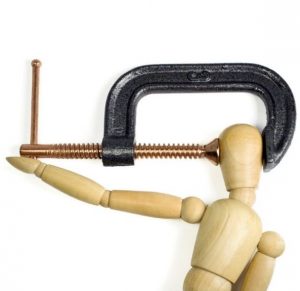Are you dealing with connective tissue disease? If you are wondering what is connective tissue disease, and how to treat it, then you’ve found the right place! Our clinic here at Body@Boronia in Melbourne can help!
First, some background … The human body is made up of trillions of cells. Recent findings suggest as many as 30 trillion cells combine to form the human body at any one time. How all those cells stay together is amazing! Our bodies have within them special tissues (made up of proteins) known as ‘connective tissues’ or CTs for short, which act as a glue to hold everything together. Without connective tissue, we may just exist as one big blobby puddle on the floor!
As well as their glue-like property, connective tissues allow the tissues of the body to stretch and recoil, very much like how an elastic band works. Some common examples of proteins that make up the CTs in the body, that you may have heard of, include ‘collagen’ and ‘elastin’. It is possible for a person to have a disease which directly affects the CTs of the body. Collectively these are known as connective tissues diseases (CTDs), or diseases of connective tissue.
As connective tissue is found all over the body, nearly all of the body can be affected. CTDs may affect the skin, blood vessels, blood, muscles, fat, bones, cartilage, tendons, ligaments and other joint-related tissues. Even our eyes can be affected by connective tissue disease!
Types of Connective Tissue Disease
There are two main types of CTD… Genetic and autoimmune. We’ll explain what these mean:
- Genetic: These types of diseases are inherited. This is usually because of a single mutated gene that is passed on from your parents to you.
- Autoimmune: These types of diseases occur because your body’s defence system (aka the immune system) views the CTs as foreign and attacks them. This results in a painful, inflammation-driven condition where a person regularly experiences redness, heat, swelling and pain in specific parts of their body.
Genetic CTDs
Examples of genetic connective tissue diseasesinclude:
- Ehlers-Danlos syndrome: Affects the collagen in our body, resulting in excessively stretchy skin, hyper-mobile joints and abnormal scar tissue formation. There are over ten forms of this condition.
- Marfans syndrome: Affects fibrillin (a protein) in the body, resulting in longer bones and thin and long fingers and toes. People with Marfans are usually very tall and slender.
- Osteogenesis Imperfecta: Another condition that affects collagen, resulting in brittle bones, weak and thin skin, loose ligaments and a lower than average muscle mass.
Autoimmune CTDs
Examples of autoimmune connective tissue diseases include:
- Rheumatoid arthritis (RA): The body attacks the membranes that hold the joints together resulting in pain, stiffness, degeneration and destruction of joints throughout the body. RA typically affects the small joints of the hands and feet.
- Sjogren’s syndrome: A disease which typically leaves a person with an excessively dry mouth and eyes. People also regularly experience joint pain.
- Systemic Lupus Erythematosis (SLE): A condition that causes inflammation of the skin, internal organs and joints. Other symptoms include mouth ulcers, heart, lung and kidney problems, hair loss and mental health issues.
It is useful to point out there are many other CTDs. Having one CTD means you are more likely to have other CTDs as well.
Treatment
So where does the osteo team at Body@Boronia come into the equation? Being the holistic practitioners we are, we can help in many ways. People with CTDs regularly need help with joint range of motion, as well as an exercise program to help strengthen the body. Treatment and exercise need to be carefully planned out with CTDs, so having someone with experience to help you manage a potentially difficult condition can offer benefits, potentially into the longer term. We can also help to educate you on what the diseases are, and how they affect you to ensure you have helpful information to be helping yourself as much as possible.
If you have been diagnosed with a CTD, or have any queries about any aspect of the condition, please get in touch today for an appointment, we’d love to be a part of your team!
References
- Healthline. 2018. Diseases of connective tissue, from genetic to autoimmune. [Online]. Available from: https://www.healthline.com/health/connective-tissue-disease#types. [Accessed 16 Dec 2020]
- Genetic and rare diseases information centre. 2014. Mixed connective tissue disease. [Online]. Available from: https://rarediseases.info.nih.gov/diseases/7051/mixed-connective-tissue-disease. [Accessed 16 Dec 2020]
- Science Direct. 2019. Connective tissue disease. [Online]. Available from: https://www.sciencedirect.com/topics/medicine-and-dentistry/connective-tissue-disease. [Accessed 16 Dec 2020]
- Healthline. 2018. How many cells are in the human body? Fast facts. [Online]. Available from: https://www.healthline.com/health/number-of-cells-in-body. [Accessed 16 Dec 2020]







